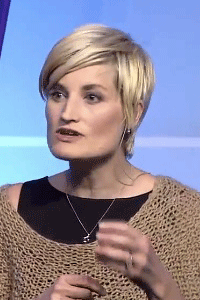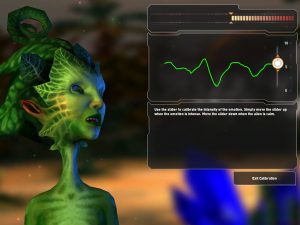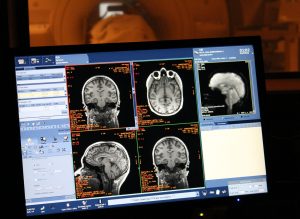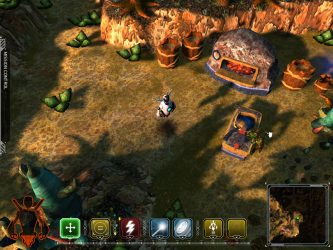A team of researchers at WID’s Games+Learning+Society (GLS) research group are building video games from the ground up aimed at teaching children pro-social behaviors, including recognizing others’ emotions.

Teaming up with the Center for Investigating Healthy Minds, also on the UW-Madison campus, the group developed a new approach to gauge children’s ability to learn these behaviors while engaging in entertaining video game play.
Scientists and developers from the groups worked together to design the games Tenacity and Crystals of Kaydor, which are currently being tested in a series of studies involving middle school-aged children. The team gathers data on decisions made in the game, but surveys and functional and structural MRI scans will reveal whether neurological changes associated with empathy and other pro-social mental states are at play.
Tenacity tasks players to complete simple breathing and meditative exercises, while Crystals of Kaydor positions players as a marooned robot on a foreign planet who gauge the emotions and social situations of local aliens to work through the game.

Constance Steinkuehler, co-director of GLS and associate professor of education, says the project’s ability to measure impact at a neurological level will be especially valuable in learning whether games hold impact as vehicles for teaching noncognitive skills.
“We’re looking at pro-social skills, particularly being able to recognize human emotions and then respond to them in some productive fashion, which turns out to be harder than you might think,” says Steinkuehler. “So we look at pre- and post-test measures and see if there is a difference… For example in Tenacity, our mindfulness app, you might ask yourself ‘Is there a dosage effect? Can we see that more game play has more positive effect on kid’s attention?’”
In addition to measuring behaviors and progress in the game, Richard J. Davidson, founder of the Center for Investigating Healthy Minds, and colleagues from his lab will perform MRI scans on participants before and after they play the game for two weeks to measure both structural and functional changes in the brain. Children are randomly assigned to play one of the games created by the team, or a commercially available control game that is similar in form to the newly created game.

Previous work has suggested specific games can produce changes in the brain, but no research has explored whether games that both teach and entertain can affect social skills and their underlying circuits in the brain.
Steinkuehler says the games, like others created and studied at GLS, are designed for impact and could hold large potential.
“There’s this tremendous amount of time and energy investment in games and media,” she says. “So part of what we’ve been trying to figure out is how do we take some of that time and make it beneficial for the people engaged in it? We have examples from television or film of documentaries, of art pieces, of indie films, of shows like Sesame Street, that actually have documented benefits for their viewers. So games are another media, why not use them?”

The collaboration could also illuminate whether mindfulness and kindness can be taught through training.
“Modern neuroscientific research on neuroplasticity leads us to the inevitable conclusion that well-being, kindness and focused attention are best regarded as skills that can be enhanced through training,” says Davidson. “This study is uniquely positioned to determine if game playing can impact these brain circuits and lead to increases in mindfulness and kindness.”
— Marianne Spoon


You must be logged in to post a comment.